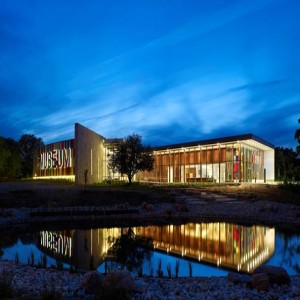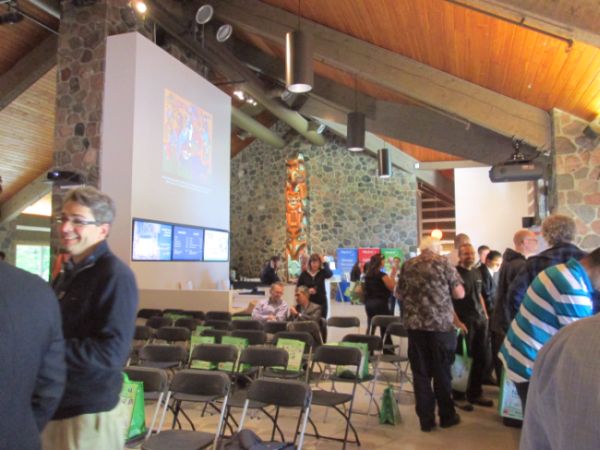 Amidst the soaring high ceilings and cabin-comfort feel of McMichael Canadian Art Collection, last week Nedco and OSRAM introduced some excellent news for all those who are interested in the growing trend toward cost-saving, energy efficient LED lighting. There are more product options, ready to fit more fixtures, and provide more savings! New offerings are not only on par with but surpassing CFL, halogen, and incandescent technologies in two important ways: savings, and quality of light. For galleries, museums, and theatres across Ontario, this means that LED lighting not only makes your facility greener and more sustainable, but it also helps your bottom line and provides a superior visitor experience.
Amidst the soaring high ceilings and cabin-comfort feel of McMichael Canadian Art Collection, last week Nedco and OSRAM introduced some excellent news for all those who are interested in the growing trend toward cost-saving, energy efficient LED lighting. There are more product options, ready to fit more fixtures, and provide more savings! New offerings are not only on par with but surpassing CFL, halogen, and incandescent technologies in two important ways: savings, and quality of light. For galleries, museums, and theatres across Ontario, this means that LED lighting not only makes your facility greener and more sustainable, but it also helps your bottom line and provides a superior visitor experience.
Is LED Suitable for Arts Spaces? YES! The Advantages:
- Fits existing fixtures – even many historic fixtures
- Excellent visitor experience – increased luminance reveals more colour and depth in paintings
- Preserves art – causes no UV or heat damage, reduces need for art to “rest” in dark storage spaces
- Straightforward installation and good light angle, low spill (reflectors not needed)
A Compelling Business Case for Your Funders and Supporters:
- The average energy savings from LED come in at 75-84%
- LED technology produces less heat
- Saves money on air-conditioning
- Lasts 10 to 20 times longer than incandescent bulbs
- Free of hazardous materials (no mercury, unlike CFLs)
With incentives, many organizations realize full payback in under one year. Best of all, savings continue to accumulate long after the glorious payback mark!
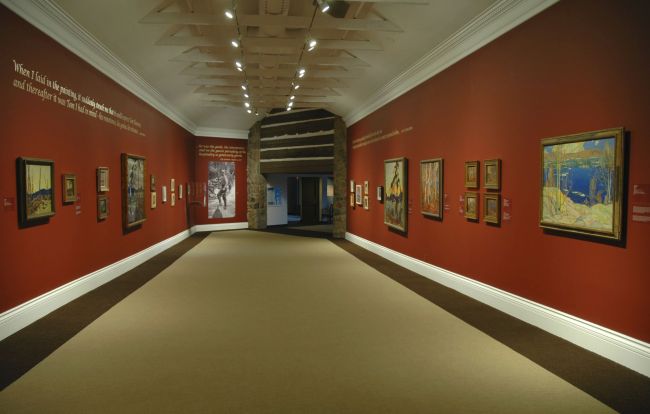
Success Stories from Arts and Heritage Spaces
In 2010, McMicahel Canadian Art Collection became the first large galleries in North America to switch over to LED lighting. PowerStream and OSRAM SYLVANIA were partners on this incredible transition. They reported significant savings on electricity (more than 60%!) and gallery staff added: “Not only is there sustainable benefit to the environment and operating costs, but to the artwork as well, since LED lighting does not emit harmful UV radiation and heat that adds to the deterioration of paintings.” On the tour, we saw how the light angle and colour flatter paintings. They’re “like jewels” on the wall, one onlooker commented. Lighting aficionados and gallery staff on the tour were impressed by the low spillage and the range of earthy, red hues that appeared noticeably richer under LED lighting.
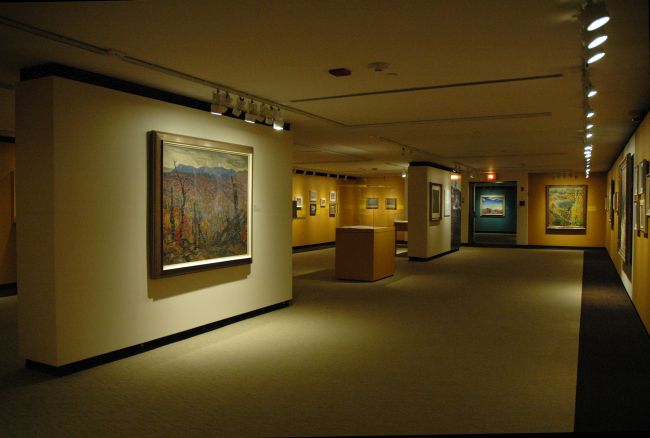
On the world stage, OSRAM’s LED success stories include the renowned Sistine Chapel in Rome, home to Michelangelo’s delicate frescoes, drawing open-mouthed stares from millions — roughly 5.5 million people visit this sacred site annually. Closer to home, the Chapel at Royal St. George in Toronto has also benefitted from OSRAM’s LED lighting, which fit existing historical fixtures. They also improved visibility of the stunning stained glass and double hammerbeam roof – the only one of its kind remaining in Canada. LIGHTING PRO TIP: LPW or lumens per watt is the measure that matters! This is the “miles per gallon” for lighting, your best indicator of efficiency. The LPW delivered by LED technology has been on the rise over the last few years, now surpassing other technologies.
Where You Can Find Incentives
- PowerStream offers Conservation and Demand Management services and can help you access incentives from the Ontario Power Authority.
- The Better Buildings Partnership Loan Program for Toronto-based organizations. They use a handy Intent to Apply form that’s a quick and simple way to find out whether funding can be made available.
- Nedco‘s teams can assess your current setup and make recommendations including incentive options and estimated payback date.

—
Not sure where to begin? Click to access ArtsBuild’s free tools, developed by facilities professionals, for use in Ontario’s nonprofit arts organizations:
- PLAN IT | BUILD IT — your step-by-step guide to capital projects
- Resource Library — for all things facilities related. Find case studies from organizations like yours, figure out feasibility studies, and more!

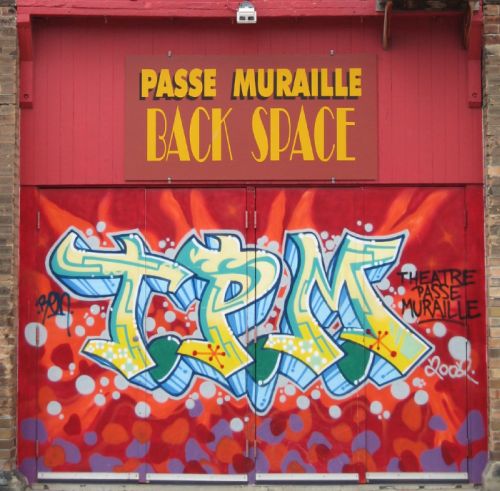
 Sometimes, it is best to just dive in. A cool lake on a hot summer day or a delicious plate of pasta, both deserve the dive in treatment. Renovations…not so much. Bill Coleman and Laurence Lemieux, Co-Artistic Directors of Coleman Lemieux & Compagnie did just that and admittedly, “did it all wrong”. The end result however is more than all right.
Sometimes, it is best to just dive in. A cool lake on a hot summer day or a delicious plate of pasta, both deserve the dive in treatment. Renovations…not so much. Bill Coleman and Laurence Lemieux, Co-Artistic Directors of Coleman Lemieux & Compagnie did just that and admittedly, “did it all wrong”. The end result however is more than all right.

